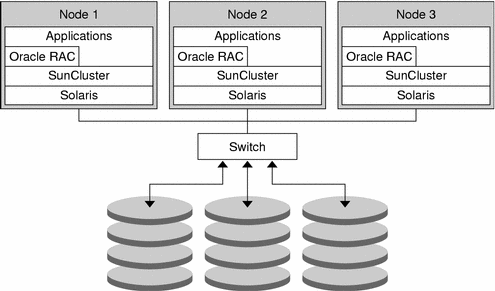Introduction to Solaris Volume Manager for Sun Cluster
Starting with the Solaris 9 9/04 release, Solaris Volume Manager can manage storage in a Sun Cluster environment using multi-owner disk sets. Multi-owner disk sets allow multiple nodes to share ownership of a disk set and to simultaneously write to the shared disks. Previously, shared disk sets were visible from all participating hosts in the disk set, but only one host could access it at a time. Multi-owner disk sets work with Sun Cluster and with applications such as Oracle9i Real Application Clusters. For information about compatible releases of Sun Cluster, see http://wwws.sun.com/software/cluster.
Multi-owner disk sets and Solaris Volume Manager shared disk sets can coexist on the same node. However, moving disk sets between the two configurations is not supported.
Note –
Solaris Volume Manager for Sun Cluster device id support for multi-owner disk sets is not available. Therefore, importing multi-owner disk sets from one system to another is not supported at this time.
Solaris Volume Manager for Sun Cluster creates the same components that you can create with Solaris Volume Manager, including stripes, concatenations, mirrors, soft partitions, and hot spares. Solaris Volume Manager for Sun Cluster does not support RAID-5 volumes and transactional volumes.
The following figure shows the association between the software and the shared storage in a typical cluster configuration.
Figure 4–1 Sample Cluster Configuration

Each node has local storage as well as at least one path to shared storage. The multi-owner disk sets in the cluster are managed by Solaris Volume Manager for Sun Cluster, which is part of the Solaris Operating System (Solaris OS).
- © 2010, Oracle Corporation and/or its affiliates
